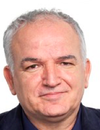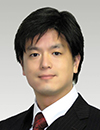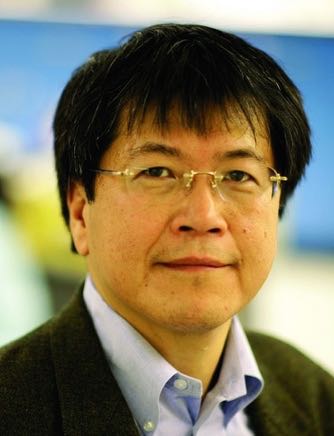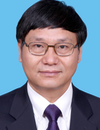Monday, 2 October 201712:45 | Conference Registration, Materials Pick-Up, and Networking | |
Session Title: Opening Plenary Session -- Convergence of Microfluidics, POC Diagnostics and Biosensors |
| | 13:30 |  | Keynote Presentation Micro & Nanotechnologies For Physical Phenotyping of Cells
Dino Di Carlo, Armond and Elena Hairapetian Chair in Engineering and Medicine, Professor and Vice Chair of Bioengineering, University of California-Los Angeles, United States of America
My lab uses microtechnology to interface at the scale of biology to aid
in scientific investigation, develop new approaches to diagnose and
monitor disease, and engineer therapies. A part of our laboratory
develops tools to assay and exploit physical properties of cells in
diagnostics and drug screening. Physical properties of cells can provide
integrative, rapid, and low-cost information about disease. My
discussion will focus on instruments we have developed that quantify
single-cell physical phenotypes such as deformability, size, and
contractility. These new tools show promise to enable diagnostic and
screening approaches that assay immune cell function at the
point-of-care, tumor cell malignancy with higher confidence than
molecular markers alone, and many other cell phenotypes associated with
disease. |
| 14:00 |  | Keynote Presentation Re-envisioning Point-of-Care Pathogen Diagnostics for the Developed and Developing Worlds
Paul Yager, Professor, Department of Bioengineering, University of Washington, United States of America
Whether the purpose is to guide treatment of an individual’s infection,
or to control the outbreak of a pandemic, there is an urgent need for
low-cost rapid diagnostic devices capable of identifying the cause of
infectious disease that free testing from the centralized laboratory.
“Ubiquitous diagnostics”, aided by the revolution that brought us
today’s distributed computing and communications, can bring the best
diagnostic capabilities to physicians’ office laboratories and
pharmacies in the developed world, or to places in the developing world
where nothing is available now. The practice of medicine itself can be
improved if diagnostic tests could be carried out more rapidly and
pervasively. The Yager lab has been engaged in a 20-year pursuit of
microfluidics-based tools and complete systems for pathogen
identification in human samples, most recently in an inexpensive
instrument-free single-use disposable format that could be used by
consumers in their homes and by healthcare workers in low-resource
settings in the developing world. The central effort today is to
utilize capillary action in porous materials to eliminate the need for
pumps and other equipment to control fluid flow. By coupling the
chemical testing with cell phones, critical health data can be analyzed
rapidly and anywhere, and the best healthcare decisions can be made for
patients, for regional healthcare systems, and for global health. There
have been 3 analytical approaches pursued in our group: Identification
and quantification of 1) antibodies specific to pathogens, 2) proteins
of the pathogens, and 3) nucleic acid sequences derived from the
pathogens. We report on recent results on particularly simple
paper-based systems supported by NIH (detection of influenza proteins;
improvement of specificity of Zika virus serology), DARPA (detection of
DNA and RNA from bacterial and viral pathogens) and DTRA (detection of
proteins from the Ebola virus). All projects involve close
collaboration with partners inside and outside the university
environment, and are aimed at producing clinically useful tools for
point-of-care medicine. |
| 14:30 |  | Keynote Presentation Paper-based Nanobiosensors: Diagnostics Going Simple
Arben Merkoçi, ICREA Professor and Director of the Nanobioelectronics & Biosensors Group, Institut Català de Nanociencia i Nanotecnologia (ICN2), Barcelona Institute of Science and Technology (BIST), Spain
Biosensors field is progressing rapidly and the demand for cost efficient platforms is the key factor for their success. Physical, chemical and mechanical properties of cellulose in both micro and nanofiber-based networks combined with their abundance in nature or easy to prepare and control procedures are making these materials of great interest while looking for cost-efficient and green alternatives for device production technologies. Both paper and nanopaper-based biosensors are emerging as a new class of devices with the objective to fulfill the “World Health Organization” requisites to be ASSURED: affordable, sensitive, specific, user-friendly, rapid and robust, equipment free and deliverable to end-users. How to design simple paper-based biosensor architectures? How to tune their analytical performance upon demand? How one can ‘marriage’ nanomaterials such as metallic nanoparticles, quantum dots and even graphene with paper and what is the benefit? How we can make these devices more robust, sensitive and with multiplexing capabilities? Can we bring these low cost and efficient devices to places with low resources, extreme conditions or even at our homes? Which are the perspectives to link these simple platforms and detection technologies with mobile phone communication? I will try to give responses to these questions through various interesting applications related to protein, DNA and even contaminants detection all of extreme importance for diagnostics, environment control, safety and security. |
| 15:00 |  | Keynote Presentation Microfluidic Devices – Key Technologies to Enable Real-Time Patient Monitoring and Treatment
Martyn Boutelle, Professor of Biomedical Sensors Engineering, Imperial College London, United Kingdom
Clinical practice is beginning to wake upto the potential of real-time molecular information from venerable tissue as a means to understand the progression in the tissue of injury or disease. Such patterns of molecular changes, particularly when combined with paternal of physical of electrical signatures, offer the exciting possibility of allowing clinicians to guide therapy on an individualized basis in real time. In this presentation I will describe the development of 3D printed microfluidic devices connected to wireless electronics for transplant organ and patient monitoring. Tissue sampling is via integrated microdialysis probes. Concentrations of important biomarkers are measured using microscale amperometric biosensors (energy metabolites, and excitatory neurotransmitters) and ion-selective electrodes (ISE) for tissue ionic balance. Detailed patterns of ionic responses can be revealed using a high density ISE array within the flow stream. High time resolutions can be achieved using a novel droplet based microfluidic system. The presentation with describe the design and optimization challenges and include clinical examples from our recent work. |
| 15:30 | Coffee Break and Networking | 16:15 |  | Keynote Presentation Microfluidics for Bottom-Up Tissue Engineering
Shoji Takeuchi, Professor, Center For International Research on Integrative Biomedical Systems (CIBiS), Institute of Industrial Science, The University of Tokyo, Japan
In this presentation, I will talk about several Microfluidic-based
approaches for the rapid construction of 3D-cellular construct.
Large-scale 3D tissue architectures that mimic microscopic tissue
structures in vivo are very important for not only in tissue engineering
but also drug development without animal experiments. We demonstrated a
construction method of 3D tissue structures by using cell beads and
cell fibers. To prepare the cellular beads, we used an axisymmetric flow
focusing device (AFFD) that allows us to encapsulate cells within
monodisperse collagen beads. By molding these cell beads into a 3D
chamber and incubating them, we successfully obtained complicated and
milli-sized 3D cellular constructs. As the cell fibers, a
cell-encapsulating core-shell hydrogel fiber was produced in a double
coaxial laminar flow microfluidic device. When with myocytes,
endothelial, and nerve cells, they showed the contractile motion of the
myocyte cell fiber, the tube formation of the endothelial cell fibers
and the synaptic connections of the nerve cell fiber, respectively. By
reeling, weaving and folding the fibers using microfluidic handling,
higher-order assembly of fiber-shaped 3D cellular constructs can be
performed. Moreover, the fiber encapsulating beta-cells is used for the
implantation of diabetic mice, and succeeded in normalizing the blood
glucose level. |
| 16:45 |  | Keynote Presentation Mixed-Scale Fluidic System: Searching for Drug-induced DNA Damage in Circulating Tumor Cells
Steve Soper, Foundation Distinguished Professor, Director, Center of BioModular Multi-Scale System for Precision Medicine, The University of Kansas, United States of America
Improved therapies that yield more cures and better overall survival for
cancer patients are needed. For example, women with breast cancer have a
5-year survival rate of 22% (Stage IV) and 72% (Stage III).
Doxorubicin, cisplatin, paclitaxel, and tamoxifen are examples of drugs
used for treating breast cancer with selection of therapy typically
based on the classification and staging of the patient’s cancer. While
treatment regimens assigned to some patients may be optimal using the
current classification model, others within certain breast cancer
sub-types fail therapy. New assays must be developed to determine how a
patient’s physiology and genetic makeup affects drug efficacy. In this
presentation, a series of chips are used for the isolation and
processing of circulating tumor cells (CTCs). The chips quantify
response to therapy using three pieces of information secured from the
CTCs; (1) CTC number; (2) CTC viability; and (3) the frequency of DNA
damage (abasic (AP) sites) in genomic DNA (gDNA) harvested from the
CTCs. Microscale chips are used for CTC selection, CTC enumeration and
viability determinations. The chip to read AP sites is a nanosensor chip
made via nano-imprinting in plastics and contains a nanochannel with
dimensions less than the persistence length of double-stranded DNA (~50
nm). Labeling AP sites with fluorescent dyes and stretching the gDNA in
the nanochannel to near its full contour length allows for the direct
readout of the AP sites, even from a single CTC. This information is
used to determine how a patient is responding to therapy. |
| 17:15 |  | Keynote Presentation PCR-Free MicroRNA Quantification Based on Ion-Selective Nanoporous Membranes and Nanopores
Hsueh-Chia Chang, Bayer Professor of Chemical and Biomolecular Engineering, University of Notre Dame, Interim Chief Technology Officer, Aopia Biosciences, United States of America
We report an integrated biochip platform that can identify and quantify
low copy numbers of microRNA biomarkers in a heterogeneous physiological
sample like blood, saliva or urine. This quantification assay is done
without PCR amplification, reporter labeling, extensive off-chip
pretreatment and expensive optical sensors. Consequently, it does not
introduce PCR/ligation bias and limits analyte loss during
pretreatment. The main components of the integrated biochips are
nanoporous membranes and solid-state nanopores with pore radii smaller
than the nm-scale Debye length. We use the ion concentration and charge
polarization features of the ion-selective membranes to control the
on-chip ionic strength, actuate pH by splitting water, lyse exosomes and
isolate/concentrate the target molecules. The final nanopore sensor or
sensor array utilizes surface modification and pore geometry to
preferentially delay the translocation time of the target microRNAs to
achieve single-molecule identification and quantification. The
integrated chip achieves a translocation frequency (throughput) that is
at least one hundred times higher than any literature or commercial
nanopore technology. |
| 17:45 |  | Keynote Presentation Nanomotor-Microchip Diagnostics: Moving the Receptor in Microchannel Networks
Joseph Wang, Chair of Nanoengineering, SAIC Endowed Professor, Director at Center of Wearable Sensors, University of California-San Diego, United States of America
This presentation will describe new motion-based microchip assays based on autonomously moving receptor-functionalized nanomotors. The new motor-based sensing approach relies on new capabilities of modern nano/microscale motors. Particular attention will be given to catalytic nanowire and microtube motors propelled by the electrocatalytic decomposition of a chemical fuel, The increased cargo-towing force of new man-made nanomotors, along with their precise motion control within microchannel networks, versatility and facile functionalization, can be combined for developing advanced microchip systems based on active transport. The motion-based biosensing strategy relies on the continuous movement receptor-modified microengines through complex samples in connection to diverse ‘on-the-fly’ biomolecular interactions of nucleic acids, proteins, bacteria or cancer cells. A variety of receptors, attached to self-propelled nanoscale motors, can thus move around the sample and, along with the generated microbubbles, lead to greatly enhanced fluid transport and accelerated recognition process. Selective capture and transport of target DNA and cancer cells from raw complex body fluids will be demonstrated. Key factors governing such motion-based sensing will be covered. The resulting assays add new and rich dimensions of analytical information and offer remarkable sensitivity, coupled with simplicity, speed and low costs. We will discuss the challenges of implementing molecular recognition into the nanomotor movement and for generating well-defined distance signals. New microengines with a ‘built-in’ recognition capability, based on boronic-acid or molecularly-imprinted outer layers, will also be discussed. The latter obviated the need for the receptor immobilization. The greatly improved capabilities of chemically-powered artificial nanomotors could pave the way to exciting and important bioanalytical applications and to sophisticated nanoscale and microchip devices performing complex tasks. |
| 18:15 | Networking Cocktail Reception with Beer, Wine and a Light Dinner in the Exhibit Hall. Engage with Colleagues and Visit the Exhibitors | 19:45 | Close of Day 1 of the Conference |
Tuesday, 3 October 201708:00 | Conference Registration, Materials Pick-Up, Morning Coffee and Breakfast Pastries | 12:15 | Networking Lunch in the Exhibit Hall -- Meet the Exhibitors and View Posters | |
Session Title: Convergence of Microfluidics and Biosensors |
| | 13:30 | Establishing Gene expression for Prediction of the Hematological Acute Radiation Syndrome
Michael Abend, Deputy Director, Leader of Genomic Department, Bundeswehr Institute of Radiobiology, Germany
We identified a radiation-induced gene signature measured in the peripheral blood of baboons and patients to predict the later occurring hematological acute radiation syndrome (HARS). Next step is a foward-deployable device. | 14:00 |  | Keynote Presentation Correlated Chemical Imaging and Spatiotemporal Organization in Microbial Communities
Paul Bohn, Arthur J. Schmitt Professor of Chemical and Biomolecular Engineering and Professor of Chemistry and Biochemistry, University of Notre Dame, United States of America
Biofilms, such as those formed by the opportunistic human pathogen Pseudomonas aeruginosa are complex, matrix-enclosed, surface-associated communities of cells that exhibit properties - such as enhanced resistance to antibiotics - distinct from their free-floating counterparts. P. aeruginosa biofilms are associated with persistent and chronic infections in diseases such as cystic fibrosis and HIV-AIDS and thus are primary targets for the lab-on-a-chip community. P. aeruginosa cells organize themselves by synthesizing and secreting signaling molecules, implicated in quorum sensing (QS), and in regulating biofilm formation and virulence. Correlated chemical imaging using powerful molecular imaging platforms, such as confocal Raman microscopy and SIMS-based mass spectrometric imaging, in conjunction with multivariate statistical tools, are being applied to study the spatial and temporal distributions of signaling molecules, secondary metabolites and virulence factors in biofilm communities of P. aeruginosa. These studies reveal that laboratory strains of Pseudomonas differ significantly both from genetic mutants and from clinical isolate strains in the mechanisms used for chemical communication as well as the organization of the resulting biofilms in monoculture. They also reveal significant modes of action in co-cultures involving different strains and different bacterial species. |
| 14:30 | Droplet microfluidics For High-throughput Chemotaxis Studies on C. elegans and Microfluidic Platform for White Blood Cell Enrichment and Collection
Venkat Gundabala, Assistant Professor, Indian Institute of Technology (IIT Bombay), India
Prerna Chandna, Researcher, Indian Institute of Technology (IIT Bombay), India
In the first part of the talk, we will discuss a novel approach to chemotaxis studies of C. elegans through the use of droplet microfluidics. In the second part of the talk, we will discuss a controllable microfluidic platform to enrich and efficiently collect WBCs from blood. | 15:00 | Coffee Break and Networking in the Exhibit Hall | 15:45 |  | Keynote Presentation Microfluidic and 3D Printing Devices for Cell Patterning and Tumor Analysis
Xueji Zhang, Professor & Director, University of Science and Technology Beijing, China
Traditional methods for living cell analysis have been limited by the incapability of gaining information from dynamic imaging and molecular level information such as gene expression simultaneously. Herein we report an easy but versatile method for patterning different cells on a single substrate by using a microfluidic approach “Ip-Do Assay”, which allows not only controlling of cells niches but also retrieval of specific treated cells to quantitatively analysis their gene expression. Recently, we also developed a 3D printed “LEGO”-like device to implement tumor cell migration and metastasis assay without any micro-fabrication process due to the easy configuration of 3D printing. This technology allows quantitative analysis on not only tumor cell migration at single cell level but also for tumor-somatocyte interactions. |
| 16:15 | Remote Dielectrophoresis Using Standing Shear Surface Acoustic Waves: A Comprehensive Study
Akshay Kale, Research Fellow, University of Leeds, United Kingdom
This work focuses on an in-depth characterization a novel microfluidic device employing remote dielectrophoresis (DEP) induced via shear surface acoustic waves (SH-SAWs), with the help of an experimentally verified, first of its kind, comprehensive 3D finite element mathematical model. | 16:45 | A Novel Technology For Rapid and Minimally Manipulative Enrichment of Human Mesenchymal Stromal Cells
Africa Smith de Diego, Researcher, University of Leeds, United Kingdom
This work is the first demonstration of a high throughput, minimally manipulative separation of viable human dental pulp stromal cells (DPSCs) using remote dielectrophoresis (DEP) induced by shear surface acoustic waves (SH-SAWs). | 17:15 | Lab on Paper for Age Related Diseases in Resource-Limited Settings
Gopal Ammanath, Researcher, Nanyang Technological University Singapore, Singapore
Age Related Diseases (ARD) are of significant concern requiring novel diagnostic tools for early diagnosis and continuous monitoring. Paper-based analytical device is developed to detect ARD biomarkers using conjugated polymers as luminescent reporters for point of care healthcare. | 17:45 | Conformal Shrink Electronics & Other Random Stuff
Michael Chu, Department of Biomedical Engineering, University of California-Irvine, United States of America
Highly sensitive and flexible components are essential for applications in wearable electronics for digital health solutions. Using low-cost and scalable methods, we have developed a suite of conformal sensors for wellness and disease monitoring. Fabricated using commodity shrink-film, a shape memory polymer that retracts upon heat, stiffer nano materials deposited on the shrink substrate wrinkle. These high surface area wrinkled electrodes dramatically improve both elasticity and pressure sensitivity. We demonstrate a diverse array of applications for such low cost and manufacturable sensors. I will also discuss other larger initiatives I am involved with, including digital health solutions, sports performance monitoring, cellular and point of care assays and microfluidics. | 18:15 | Networking Cocktail Reception with Beer, Wine and Appetizers in the Exhibit Hall. Engage with Colleagues and Visit the Exhibitors | 19:30 | Close of Day 2 of this Conference Track. |
|
